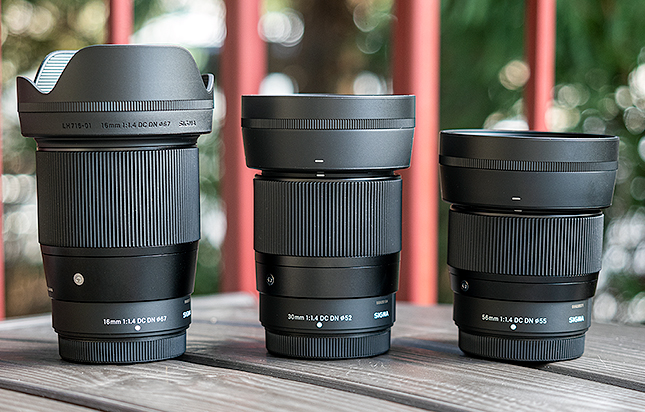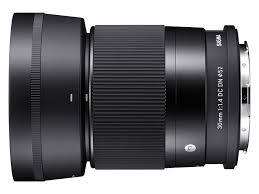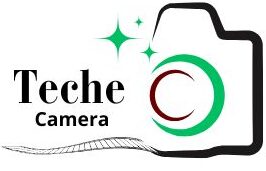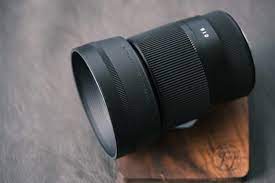The Sigma 30mm f/1.4 DC DN is a standout prime lens for APS‑C mirrorless cameras, especially those using Sony E-mount. Its bright f/1.4 aperture, exceptional sharpness, and lightweight design make it a top choice for portrait, street, and low-light photography. In this article, we’ll dive deep into its design, real-world performance, autofocus capabilities, limitations, alternatives, and more, giving you the ultimate guide to decide if it’s right for you.
Key Specs at a Glance
| Feature | Specification |
| Mount | Sony E / Canon EF‑M / Micro Four Thirds |
| Format | APS‑C |
| Focal Length | 30 mm (≈45 mm equivalent) |
| Aperture | f/1.4 – f/16 |
| Diaphragm Blades | Rounded 9‑blade |
| Filter Size | 52 mm |
| Weight | ~265 g |
| Stabilization | None (use IBIS) |
| Price (approx.) | US $339–379 |
Design & Build Quality
Made with Thermally Stable Composite (TSC) materials and a brass bayonet mount, the lens feels solid and resilient. The smooth, rubberized focus ring is pleasant to use, and Sigma includes a barrel-type lens hood (though it’s a bit lightweight). A dust/moisture seal at the mount adds mild protection. Overall, it offers a premium feel similar to first-party lenses.

Image Quality Performance
Sharpness & Clarity
Sharpness is impressive, very sharp by f/2, with only minor softness at f/1.4 that disappears when stopped down. Center sharpness is excellent wide open, and corner sharpness improves through f/4.
Vignetting & Distortion
Expect about 2 stops of vignetting at f/1.4, but it fades significantly by f/2. Barrel distortion is present but easily corrected with lens profiles.
Chromatic Aberration & Contrast
Slight CA (especially fringing in bokeh) shows up wide open but is manageable in editing. Contrast is natural and well-balanced.
Autofocus & Manual Focus Performance
The Sigma 30mm f/1.4 DC DN lens features a quiet and fast stepping motor that’s optimized for mirrorless systems, especially those using Sony E-mount and Micro Four Thirds. On Sony Alpha bodies, the lens supports real-time Eye-AF and continuous autofocus, making it suitable for both stills and video. In good lighting, the autofocus is impressively fast and precise, but in low light or fast-moving situations, it may hunt slightly compared to Sony’s native lenses.
Manual focusing is electronic-by-wire, which allows for precise adjustments, though it might not feel as tactile as mechanical systems for users who prefer a more traditional manual feel. The smooth rotation and focus assist tools like peaking help improve manual accuracy. Despite being slightly behind native Sony primes in speed, the overall autofocus performance is more than acceptable for most casual, portrait, and vlogging tasks.
Low-Light & Bokeh Performance
One of the standout features of the Sigma 30mm f/1.4 DC DN is its f/1.4 wide aperture, which delivers superb low-light performance. Whether you’re capturing street scenes at night or shooting indoors without flash, this lens pulls in plenty of light to keep ISO low and shutter speeds fast.
The lens has a 9-blade rounded diaphragm, which results in smooth, circular bokeh when shooting wide open. Backgrounds melt away beautifully, and subject isolation is strong. While some minor chromatic aberration (bokeh fringing) may occur around highlights in high-contrast scenes, it’s generally well-controlled and can be reduced in post-processing.
In real-world use, this lens performs exceptionally well in indoor concerts, low-lit cafes, or nighttime cityscapes. Skin tones appear natural, and transitions from sharp to out-of-focus areas are buttery smooth, making it a popular choice among portrait and lifestyle photographers.
Video Capabilities
The Sigma 30mm f/1.4 DC DN is a capable video lens for creators working with Sony, Panasonic, or other mirrorless systems. The autofocus motor is quiet and fluid, minimizing focus noise that would otherwise be picked up by on-camera microphones. This is especially beneficial for vloggers and documentary filmmakers who rely on autofocus while speaking or moving.
Another strength is minimal focus breathing, which ensures that the framing remains consistent even as focus shifts between subjects at different distances. While it lacks optical image stabilization (OIS), the lens works very well on IBIS-equipped cameras like the Sony A6600 or Panasonic GH5. You can also mount it on a gimbal for ultra-smooth footage.
Its natural 45mm equivalent focal length (on APS-C) gives a balanced look for interviews, walk-and-talk videos, or handheld cinematic shots. Overall, it strikes a perfect balance between compact size, wide aperture, and video usability.
Real‑World Use Cases
The Sigma 30mm f/1.4 DC DN shines across several real-life photography and videography scenarios:
Street Photography: Its discreet, compact profile and 45mm equivalent focal length make it a favorite for candid moments. You can shoot close without distortion, maintaining natural proportions. The fast f/1.4 aperture also helps in dim alleyways or indoor markets.
Portraits: This lens produces a shallow depth of field that flatters facial features. It creates excellent subject-background separation, even in busy environments. It’s especially good for half-body or environmental portraits where you want more context in the frame.
Low-Light Events: Whether you’re covering a birthday party, wedding reception, or evening event, the f/1.4 aperture helps keep your ISO in check. Combined with fast shutter speeds, you can freeze motion and still capture ambient mood lighting.
Hybrid Shooters: Content creators who juggle between photos and video will love the versatility this lens offers. It’s small enough for travel yet fast and sharp enough for high-quality results. Whether you’re filming a YouTube vlog, taking Instagram portraits, or live streaming, this lens handles it all.
Limitations & Considerations
While the Sigma 30mm f/1.4 DC DN delivers a lot of value, there are a few trade-offs users should be aware of:

No Optical Stabilization (OIS): If your camera lacks in-body image stabilization (IBIS), handheld shots, especially video, may suffer from shake. It’s recommended to use a gimbal or tripod in such cases for smooth results.
Minor Distortions: Some mild barrel distortion is noticeable, particularly in architectural shots. However, this can be easily corrected using in-camera profiles or in post-processing software like Adobe Lightroom.
Not Fully Weather-Sealed: The lens only has a basic rubber gasket at the mount. It’s not rated for full weather resistance, so avoid shooting in dusty, rainy, or humid conditions unless paired with a weatherproof body and extra protection.
Focus-by-Wire System: The electronic manual focus may feel a bit disconnected compared to mechanical focusing rings. This might not be ideal for videographers or manual-focus purists who require absolute control over focus transitions.
Despite these limitations, they are minor considering the price point and performance this lens delivers.
Sigma 30mm f/1.4 DC DN vs Competitors
| Lens | Aperture | Weight | Stabilization | Price | Pros | Cons |
| Sigma 30mm f/1.4 DC DN | f/1.4 | 265 g | No | $339 | Bright, sharp, affordable | No stabilization, vignetting |
| Sony 35mm f/1.8 OSS | f/1.8 | 154 g | Yes | $449 | Compact, stabilized | Smaller aperture |
| Sigma 16mm f/1.4 DC DN | f/1.4 | 405 g | No | $379 | Wider angle, great for video | Heavier |
| Viltrox 33mm f/1.4 | f/1.4 | 270 g | No | $259 | Budget price | Autofocus less reliable |
Pros & Cons
Pros
- Bright f/1.4 aperture: superb in low light
- Outstanding sharpness from f/2
- Smooth, near-silent autofocus
- Compact & lightweight design
- Excellent value at its price point
Cons
- Lacks optical stabilization
- Slight vignetting & barrel distortion at f/1.4
- Limited weather sealing
- Focus-by-wire may not suit all
Buying Advice: Is It Worth It?
If you’re seeking a fast, sharp, and compact prime for APS‑C Sony E cameras, the Sigma 30mm f/1.4 DC DN is an excellent option. Ideal for shooters on a budget, it outperforms stock primes in value, clarity, and torsional feel, just be sure you can handle its lack of stabilization.
Alternatives to Consider
- Sony 35mm f/1.8 OSS: Great for those prioritizing stabilization.
- Sigma 56mm f/1.4 DC DN: Better for tight portrait work.
- Sigma 16mm f/1.4 DC DN: Perfect for vlogging or landscape use.
- Viltrox 33mm f/1.4: Budget-friendly, though autofocus is less robust.
Final Verdict
With impressive sharpness, beautiful bokeh, and a solid build, the Sigma 30mm f/1.4 DC DN lens punches well above its price. It’s a versatile, high-performing prime ideal for content creators, travelers, and casual portrait shooters. It earns a strong recommendation for anyone seeking quality without overspending.
FAQs
Q: Can I use the Sigma 30mm f/1.4 DC DN on full‑frame Sony bodies?
A: Yes, only in APS‑C crop mode. On full-frame mode it will vignette heavily or may lock the camera to crop.
Q: Is it good for vlogging and video?
A: Yes. It offers fast, quiet autofocus and pleasing bokeh, though stabilization relies on your camera body.
Q: How does its autofocus compare to Sony lenses?
A: Very smooth and accurate, but marginally slower than stabilized Sony primes like the 35mm f/1.8 OSS.
Q: What’s the difference between Sigma’s Contemporary and Art lenses?
A: The Contemporary line balances size, weight, and affordability. Art lenses are larger, heavier, and built for peak performance.
Q: Does it support Sony Eye-AF?
A: Yes, works seamlessly with Eye-AF and continuous AF on modern Sony bodies.

